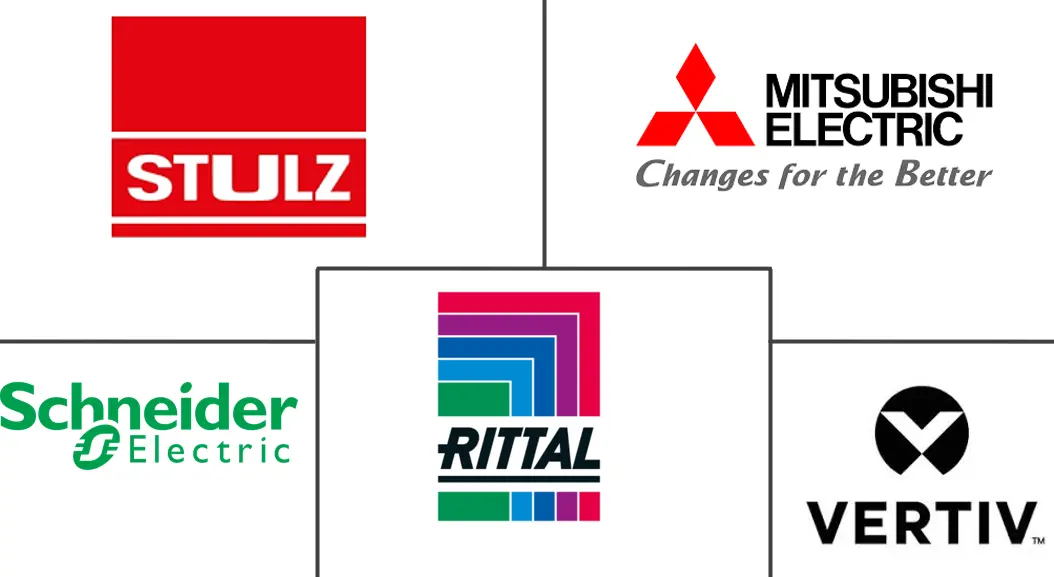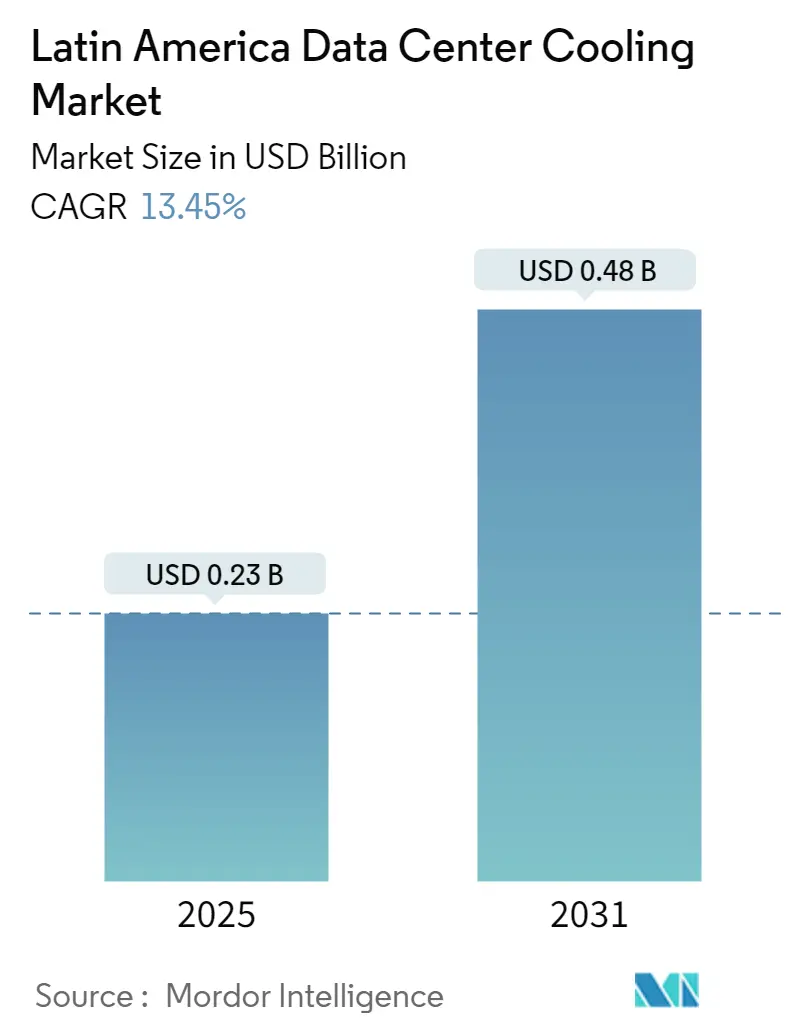
Latin America Data Center Cooling Market Analysis by Mordor Intelligence
The Latin America Data Center Cooling Market size is estimated at USD 0.23 billion in 2025, and is expected to reach USD 0.48 billion by 2031, at a CAGR of 13.45% during the forecast period (2025-2031).
The growth of the Latin American data center cooling market is fueled by the rising adoption of cloud-based services, the region's expanding digital economy, increased integration of AI technologies, the ongoing deployment of 5G networks, and a notable shift toward renewable energy sourcing.
Under Construction IT Load Capacity: The upcoming IT load capacity of the Latin American data center market is expected to reach around 2,400 MW by 2030.
Under Construction Raised Floor Space: The region's construction of raised floor area is expected to increase by 8.6 million sq. ft by 2030.
Planned Racks: The region's total number of racks to be installed is expected to reach 430K units by 2030.
Planned Submarine Cables: Many submarine cable systems are under construction in the region. One such submarine cable, estimated to be built by the end of 2024, is Firmina, which stretches over 14,517 km with landing points in Las Toninas, Argentina; Praia Grande, Brazil; Myrtle Beach, SC, United States; and Punta del Este, Uruguay.
Latin America Data Center Cooling Market Trends and Insights
IT and Telecom Expected to Experience Highest Growth
- Latin America is at the forefront of the tech revolution, with Brazil, Mexico, Colombia, Argentina, and Chile emerging as its key players. Mexico boasts a USD 28 billion IT industry, making it the region's second-largest, while Brazil leads with a tech market valued at USD 45 billion. Notably, Brazil also allocates the highest percentage of its investments to technology.
- In 2022, Brazil secured the 54th position out of 131 countries in the Global Innovation Index. In 2023, investments in software, services, and hardware industries surpassed USD 46.2 billion (ABES). Additionally, In Brazil, approximately 630,000 professionals possess strong expertise in the IT field, with 133,000 focusing specifically on software development.
- Further, organizations in Mexico are steadfast in their investment plans for emerging technologies. Over the next two years, the adoption rates for these technologies are projected to double. Highlighting the trends: 5G is already in use by 42% of global companies; edge computing has seen a 25% adoption rate; IT automation stands at 45%; and while blockchain currently has a 16% adoption, it is anticipated to surge to nearly 30% in the coming two years.
- In the telecom industry, major players are prioritizing network infrastructure development, especially in developed nations. For example, in April 2024, America Movil, a leading telecommunications company from Mexico, announced its commitment to 5G investments. The company is scheduled to execute its capital expenditure plan, amounting to USD 7.1 billion, set for 2024. Such instances in the market are expected to create more need for data centers, boosting the demand for data center cooling infrastructure manufacturers in the coming years.
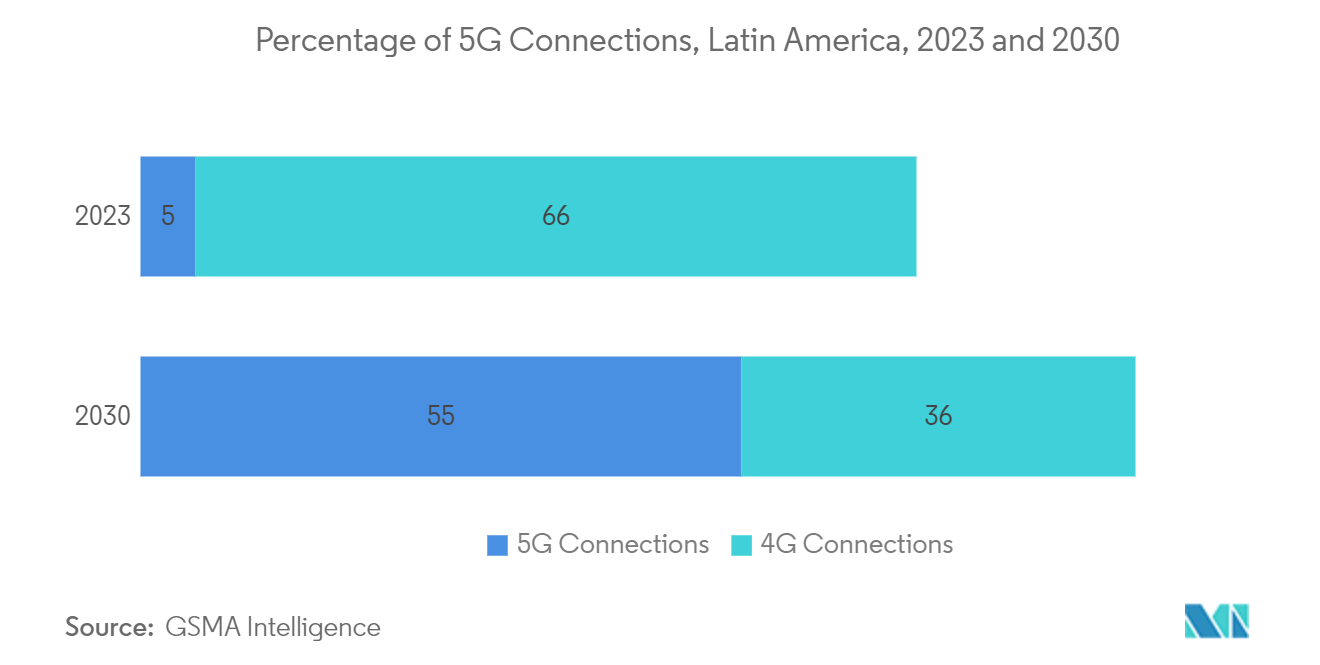
Brazil to Witness Highest Growth
- The growth of the Brazilian data center market is primarily driven by digital transformation, cloud adoption, data center expansion, the Internet of Things (IoT), e-commerce growth, telecommunications infrastructure (rollout of 5G technology), artificial intelligence (AI), big data, and government initiatives toward digitalization. These factors collectively contribute to the increasing demand for data center cooling solutions in the Brazilian market, driving both domestic and international players to invest in cooling systems to support the country's growing digital economy.
- Brazil’s information and communications technology (ICT) industry is at the forefront of innovation, driving remarkable progress and creating a future-proof environment. Utilizing state-of-the-art technologies, the ICT industry opens up a world of possibilities while facing the challenges that define its growth.
- In 2023, Brazil's ICT industry raked in BRL 708 billion (USD 142 billion), marking a 5.9% real-term growth from 2022. Breaking down the figures, the IT segment led the charge, contributing BRL 422 billion reais, encompassing software, cloud services, hardware, and digital technologies. On the other hand, telecom services, covering voice, data, and network implementation, accounted for the remaining BRL 285 billion.
- Further, in 2023, the software market was poised for a 15.1% growth, propelled by the rising demand for security, data management, artificial intelligence (AI), and enhanced customer experience (CX) solutions. Notably, software-as-a-service (SaaS) is set to dominate, with an anticipated 27.6% surge, accounting for half of all software sales. Concurrently, general IT services, encompassing application management, consulting, and systems integration, are forecasted to witness a 6.7% uptick.
- Regarding telecommunication expansion, in April 2024, the Brazilian government announced a strategic partnership with a prominent Mexican telecommunications entrepreneur to bolster its optic fiber and 5G infrastructure. The entrepreneur has committed to injecting an estimated BRL 40 billion into Brazil over five years. Considering the above instances, the IT and telecom segment is poised to generate a heightened demand for storage in the foreseeable future. This surge in storage needs is anticipated to boost the demand for data centers, fueling the need for data center cooling solutions.
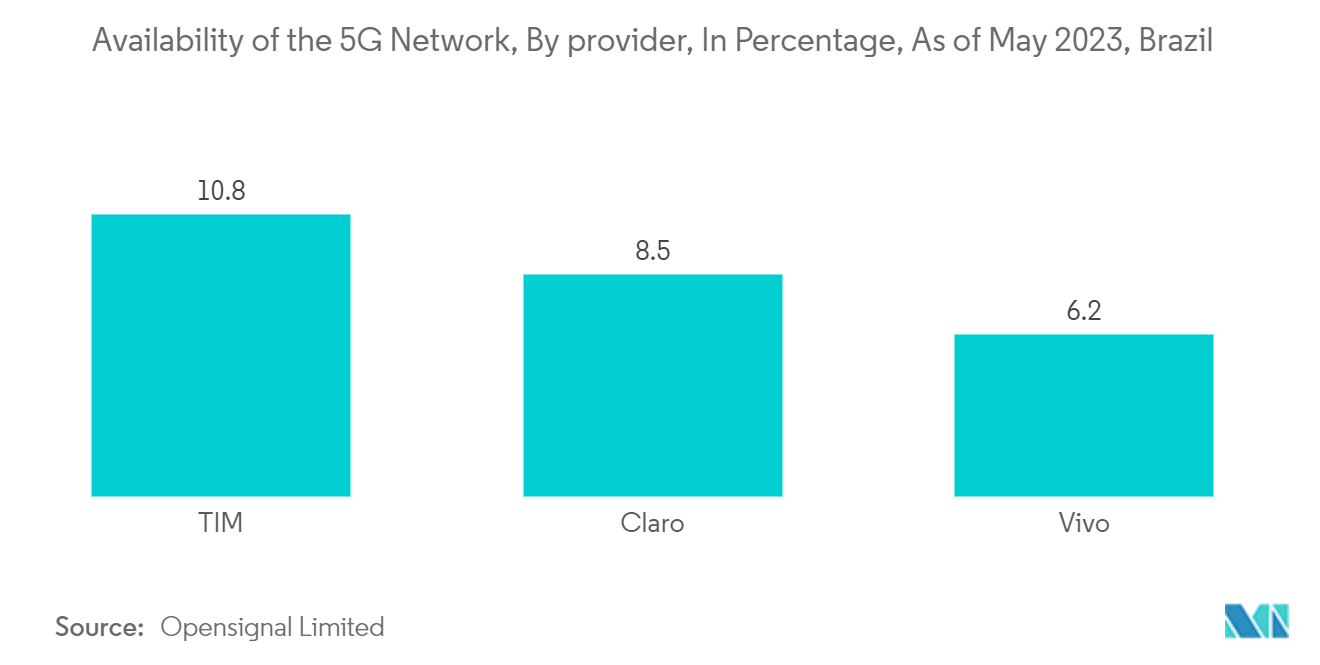
Competitive Landscape
The Latin American data center cooling market exhibits a moderate level of consolidation among key industry players, having sharpened their competitive edge in recent years. Notable market leaders in this segment include Stulz GmbH, Rittal GMBH & Co. KG, Schneider Electric SE, Vertiv Group Corp., and Mitsubishi Electric Corporation. These industry giants, boasting significant market shares, are actively engaged in expanding their customer base throughout the region. Their growth strategies primarily hinge on strategic collaborative efforts aimed at enhancing market share and overall profitability. Moreover, companies such as Schneider Electric SE, Johnson Controls International PLC, and Mitsubishi Electric Corporation offer liquid and air-based cooling products.
Latin America Data Center Cooling Industry Leaders
Stulz GmbH
Rittal GMBH & Co. KG
Schneider Electric SE
Vertiv Group Corp.
Mitsubishi Electric Corporation
- *Disclaimer: Major Players sorted in no particular order
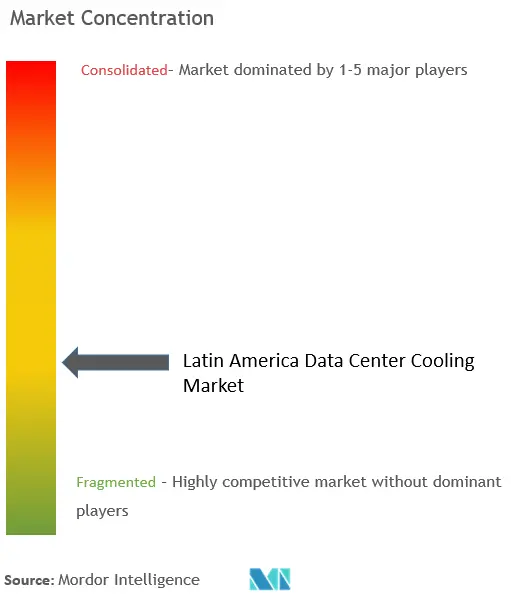
Recent Industry Developments
- May 2024: Rittal, in collaboration with multiple hyperscale data center operators, developed a modular cooling system. This solution boasts a cooling capacity exceeding 1 MW, achieved through direct water cooling. It is specifically tailored to cater to the high-power densities of AI applications.
- May 2024: Stulz unveiled its latest innovation, the CyberCool Coolant Management and Distribution Unit (CDU), specifically engineered to optimize heat exchange efficiency in liquid cooling solutions. The product line comprises four models, available in two distinct sizes. These units boast an impressive heat exchange capacity, ranging from 345 kW to 1,380 kW. Stulz set the rated water supply temperature for the facility water system at 32°C (89.6°F), with the liquid supply temperature for the technology cooling system pegged at 36°C (96.8°F)
Latin America Data Center Cooling Market Report Scope
Data center cooling refers to the collective equipment, tools, techniques, and processes that ensure an ideal operating temperature within a data center facility. With increasing capacity and higher density, there is an increasing need for energy-efficient cooling of IT equipment.
The Latin American data center cooling market is segmented into technology (air-based cooling [chillers and economizers, CRAH, cooling towers, and other air-based cooling technologies] and liquid-based cooling (immersion cooling, direct-to-chip cooling, and rear-door heat exchanger]), type of data center (hyperscaler, enterprise, and colocation), and end-user industry (IT and telecom, retail and consumer goods, healthcare, media and entertainment, federal and institutional agencies, and other end-user industries). The market sizes and forecasts are provided in terms of value (USD) for all the above segments.
| Air-based Cooling | Chiller and Economizer |
| CRAH | |
| Cooling Tower (covers direct, indirect, and two-stage cooling) | |
| Other Air-based Cooling Technologies | |
| Liquid-based Cooling | Immersion Cooling |
| Direct-to-Chip Cooling | |
| Rear-Door Heat Exchanger |
| Hyperscalers (owned & Leased) |
| Enterprise (On-premise) |
| Colocation |
| IT and Telecom |
| Retail and Consumer Goods |
| Healthcare |
| Media and Entertainment |
| Federal and Institutional agencies |
| Other End-user Industries |
| Brazil |
| Mexico |
| Chile |
| Rest of Latin America |
| By Cooling Technology | Air-based Cooling | Chiller and Economizer |
| CRAH | ||
| Cooling Tower (covers direct, indirect, and two-stage cooling) | ||
| Other Air-based Cooling Technologies | ||
| Liquid-based Cooling | Immersion Cooling | |
| Direct-to-Chip Cooling | ||
| Rear-Door Heat Exchanger | ||
| By Type | Hyperscalers (owned & Leased) | |
| Enterprise (On-premise) | ||
| Colocation | ||
| By End-user Industry | IT and Telecom | |
| Retail and Consumer Goods | ||
| Healthcare | ||
| Media and Entertainment | ||
| Federal and Institutional agencies | ||
| Other End-user Industries | ||
| By Country | Brazil | |
| Mexico | ||
| Chile | ||
| Rest of Latin America | ||
Key Questions Answered in the Report
How big is the Latin America Data Center Cooling Market?
The Latin America Data Center Cooling Market size is expected to reach USD 0.23 billion in 2025 and grow at a CAGR of 13.45% to reach USD 0.48 billion by 2031.
What is the current Latin America Data Center Cooling Market size?
In 2025, the Latin America Data Center Cooling Market size is expected to reach USD 0.23 billion.
Who are the key players in Latin America Data Center Cooling Market?
Stulz GmbH, Rittal GMBH & Co. KG, Schneider Electric SE, Vertiv Group Corp. and Mitsubishi Electric Corporation are the major companies operating in the Latin America Data Center Cooling Market.
What years does this Latin America Data Center Cooling Market cover, and what was the market size in 2024?
In 2024, the Latin America Data Center Cooling Market size was estimated at USD 0.20 billion. The report covers the Latin America Data Center Cooling Market historical market size for years: 2019, 2020, 2021, 2022, 2023 and 2024. The report also forecasts the Latin America Data Center Cooling Market size for years: 2025, 2026, 2027, 2028, 2029, 2030 and 2031.
Page last updated on:
Latin America Data Center Cooling Market Report
Statistics for the 2025 Latin America Data Center Cooling market share, size and revenue growth rate, created by Mordor Intelligence™ Industry Reports. Latin America Data Center Cooling analysis includes a market forecast outlook for 2025 to 2031 and historical overview. Get a sample of this industry analysis as a free report PDF download.
